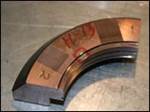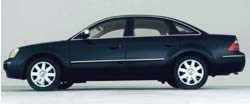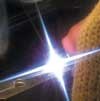How to Choose the Best Welding Method for Your Mold Application
Moldmakers can save time and money on repairs by understanding the similarities and differences of conventional and micro TIG..
While both micro and conventional welding employ tungsten to create the arc, there are some important differences between the two that can make a difference in the resulting weld and repair of tooling. Using the right technique can add up to costs savings as well. This article compares the properties of conventional TIG (tungsten inert gas) versus micro TIG welding for plastics tooling to help moldmakers determine how to choose the right technology for the most effective repair.
Conventional TIG
Today, the common welding process used for tooling repair and maintenance is TIG welding, which uses a torch, a tungsten electrode, filler metal and shielding gas. Why tungsten? Tungsten is a rare metallic material with an extremely high melting pointÑ3,410 degrees C. It is an ideal material to resist the heat required to melt the filler metal that bonds the tool steel. TIG (or conventional TIG) is the perfect welding method for materials such as stainless steel, titanium alloy, aluminum alloy and high-temperature alloy steel. It is most often used for general repairs and sometimes for assembly. For example, conventional TIG would be used for welding or laminating multiple tooling parts.
Conventional TIG would also be a choice to repair damage caused by knockout pin breakage, or to repair parting line flash and to weld gate areas. Dimensional corrections can be made to get a mold back into tolerance, and can be used to apply a permanent shim on the back or bottom of an insert or cavity and core.
Micro TIG Welding
Micro TIG welding is almost identical to conventional TIG, except it uses magnification and optics to aid in applying a precise weld. It requires lower amperage to perform the weld than conventional TIG, which is potentially less damaging to the base metal. As its name implies, micro TIG is more precise than conventional TIG welding, making it ideal for smaller repair or assembly work.
Similarities and Differences
Simply stated, the size of a weld determines which welding process should be used. Many companies make the mistake of allowing a welding vendor to use conventional TIG on any size weld, which risks compromising the integrity of the mold material and the quality of the resulting plastic part.
Similarities
Both conventional and micro TIG welding processes use tungsten and inert gas to produce an arc. The arc is formed between the non-consumable tungsten electrode and the metal being welded. Gas, usually argon, is fed through the welding torch to shield the molten weld pool and electrode. The same filler rod selections are available for use in both applications. The most common filler materials include S-7, H-13, D-2, A-2, pre-hard and stainless steel. The filler should match the base material of the mold, or the result will be an off-color weld with a potential difference in hardness that can adversely affect polishability, not to mention molded part quality. If the base material of a mold is not known, it is usually best to use stainless steel filler rod for the weld.
Differences
Larger welds, in most cases, require conventional TIG welding. Larger molds are generally not good candidates for micro TIG welding because of the small size of weld material produced using a micro torch. Conversely, when infinite control of a weld is required, micro TIG is the ticket. Micro TIG is capable of laying down a weld as small as 0.005" wide and uses between a 0.005" and a 0.020" diameter filler rod. Conventional TIG uses 0.035" and larger diameter filler rods. Consider that a strand of human hair is approximately 0.003" in diameter and you begin to understand micro TIG's capabilities. For precision, infinite control or very isolated welds, choose micro TIG. For high-heat tractor welds where there is no concern about the integrity of the base material, choose conventional TIG.
Advantages and Disadvantages of Conventional TIG
Advantages
The key advantage to conventional TIG is that it allows for high-precision, pure welds with quality unmatched by stick welding (also known as shielded metal arc welding), one of the most widely used welding processes. When dealing with tooling worth many thousands of dollars in skilled labor and quality materials, don't use anything less than the more precise conventional (and micro) TIG.
In stick welding, the electrode is coated with flux. The flux coating produces the shielding gas that protects the molten weld pool, but it also produces slag, a rough coating left over the weld that must be chipped away before polishing or finishing can be started. In addition, spatter occurs because the filler rod drips filler material into the weld pool when creating the weld. Spatter is tiny little balls of steel that, like slag, must be chipped away from around the weld.
Conversely, TIG welding creates no slag and no spatter. Both are contained by the inert gas that shields the weld, making TIG welding a much cleaner, more time-efficient process.
Disadvantages
Conventional TIG welding is performed at a much higher temperature than stick welding. Conventional welders have little control when welding at low amps, and almost always create a sink mark around the welded area. The sink mark can indicate that the steel surrounding the weld has been distorted from its original properties, which can cause problems when restoring the mold's finish and can also affect the quality of the molded part. One technique used to combat sink marks is to keep the torch heat extremely low, avoiding undercutting the base material. It is critical to keep the filler rod melting into the puddle and to move quickly to prevent the base and filler material from puddling any larger or wider around the weld than necessary.
In addition, protective paints or tapes are often used to help protect the surrounding areas from the arc produced by the tungsten. This isn't a perfect science, but it does help lessen any adverse effects by creating a shield in the heat-affected areas.
Advantages and Disadvantages of Micro TIG
Advantages
Micro TIG welding seldom causes sink marks that compromise the base material because the weld is completed at a much cooler temperature. Micro TIG amps can be adjusted by 0.5 amps at a time, going as low as 0.5 amps. Conventional TIG might start as low as 20 amps. Micro TIG also requires the use of a microscope and a micro-sized torch head that is much smaller than used in conventional TIG, allowing for greater control of weld placement, especially in tight spots. The latest technology, microscopic laser welding, uses even lower heat than micro TIG and offers superior control of weld placement through use of a fixed laser head and microscope.
When it comes to finishing a welded area, or restoring the original finish, micro TIG welding saves time over conventional TIG. Because, when done properly, micro TIG leaves no sink marks around the welded area, the part can usually be hand-stoned and polished to get the welded area back into tolerance. Conventional TIG, on the other hand, always requires some kind of machining operation, whether EDM, milling or grinding, to achieve desired tolerances.
Disadvantages
Microscopic laser welding, while advantageous in some applications, is limited in the size of parts to be welded. It is also a very expensive technology investment and a more time-consuming process for the customer, who inevitably pays more for the service.
Conventional TIG will probably always be the mainstay of tool welding, but the newer technologies like micro TIG offer some great alternatives for more sensitive repairs. Having some knowledge of their similarities and differences can help you choose the most appropriate method for your application and save time and money in the long run.
Related Content
What You Need to Know About Hot Runner Systems and How to Optimize Their Performance
How to make the most out of the hot runner design, function and performance.
Read MoreWhat is Scientific Maintenance? Part 2
Part two of this three-part series explains specific data that toolrooms must collect, analyze and use to truly advance to a scientific maintenance culture where you can measure real data and drive decisions.
Read MoreQuestions and Considerations Before Sending Your Mold Out for Service
Communication is essential for proper polishing, hot runner manifold cleaning, mold repair, laser engraving and laser welding services.
Read MoreLaser Welding Versus Micro Welding
The latest battle in finely detailed restoration/repair of mold materials.
Read MoreRead Next
TIG Welding for Mold, Tool and Die Repair
Techniques and intricacies of tool and die welding repair.
Read MoreAre You a Moldmaker Considering 3D Printing? Consider the 3D Printing Workshop at NPE2024
Presentations will cover 3D printing for mold tooling, material innovation, product development, bridge production and full-scale, high-volume additive manufacturing.
Read MoreHow to Use Continuing Education to Remain Competitive in Moldmaking
Continued training helps moldmakers make tooling decisions and properly use the latest cutting tool to efficiently machine high-quality molds.
Read More
























